 W
WThe Macedonian rebellion of 1854 took place in 1854 and is divided into two phases: the first phase took place in Western and Southern Macedonia and the second in Chalkidiki. However, after pressure from the United Kingdom and France on the government of King Otto of Greece, he was forced to recall the chieftain taking part in the rebellions throughout the Greek-inhabited regions of the Ottoman Empire, including Macedonia. The governments of the United Kingdom and France had assumed that the rebellions were related to the Crimean War (1854–1856).
 W
WThe Battle of the Alma was a battle in the Crimean War between an allied expeditionary force and Russian forces defending the Crimean Peninsula on 20 September 1854. The allies had made a surprise landing in Crimea on 14 September. The allied commanders, Maréchal Jacques Leroy de Saint-Arnaud and Lord Raglan, then marched toward the strategically important port city of Sevastopol, 45 km (28 mi) away. Russian commander Prince Alexander Sergeyevich Menshikov rushed his available forces to the last natural defensive position before the city, the Alma Heights, south of the Alma River.
 W
WThe Battle of Balaclava, fought on 25 October 1854 during the Crimean War, was part of the Siege of Sevastopol (1854–55), an Allied attempt to capture the port and fortress of Sevastopol, Russia's principal naval base on the Black Sea. The engagement followed the earlier Allied victory in September at the Battle of the Alma, where the Russian General Menshikov had positioned his army in an attempt to stop the Allies progressing south towards their strategic goal. Alma was the first major encounter fought in the Crimean Peninsula since the Allied landings at Kalamita Bay on 14 September, and was a clear battlefield success; but a tardy pursuit by the Allies failed to gain a decisive victory, allowing the Russians to regroup, recover and prepare their defence.
 W
WThe Battle of Bomarsund, in August 1854, took place during the Åland War, which was part of the Crimean War, when an Anglo-French expeditionary force attacked a Russian fortress. It was the only major action of the war to take place at Bomarsund in the Baltic Sea.
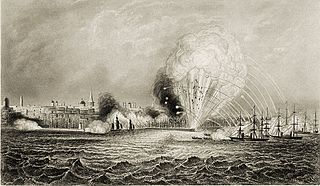 W
WThe Bombardment of Odessa was an action during the Crimean War in which a joint Anglo-French squadron of warships attacked the Russian port of Odessa.
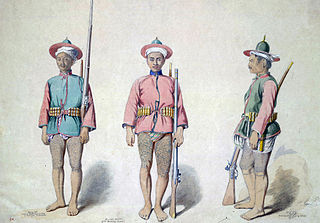 W
WThe Burmese–Siamese War of 1849–1855 was a war between the Burmese Konbaung Dynasty and the Siamese Rattanakosin Kingdom, the last of twenty wars fought between the Burmese and the Siamese between the 16th and 19th centuries. The war was the result of attempts by the Siamese to recapture much of the land they had lost to the Burmese in previous wars, as well as make reality their claims in the trans-Salween region of Myanmar that had been contested for hundreds of years. After heavy fighting, the Burmese drove the Siamese out of Shan territory, ending realistic Siamese hopes of reclaiming the territory.
 W
WThe Siege of Calafat took place in 1854 during the Crimean War. The Russians unsuccessfully besieged the Ottoman army at this place for four months before finally withdrawing.
 W
WThe Charge of the Light Brigade was a failed military action involving the British light cavalry led by Lord Cardigan against Russian forces during the Battle of Balaclava on 25 October 1854 in the Crimean War. Lord Raglan had intended to send the Light Brigade to prevent the Russians from removing captured guns from overrun Turkish positions, a task for which the light cavalry were well-suited. However, there was miscommunication in the chain of command and the Light Brigade was instead sent on a frontal assault against a different artillery battery, one well-prepared with excellent fields of defensive fire. The Light Brigade reached the battery under withering direct fire and scattered some of the gunners, but they were forced to retreat immediately, and the assault ended with very high British casualties and no decisive gains.
 W
WThe battle of Choloki took place on 4 June 1854 on the outskirts of village Kakuti in Guria during the Crimean war.
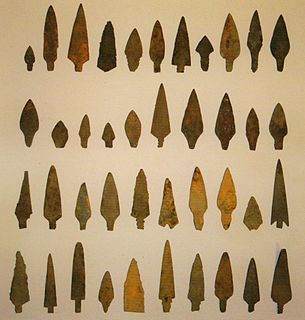 W
WThe Battle of Cieneguilla was an engagement of the Jicarilla War involving a group of Jicarilla Apaches, possibly their Ute allies, and the American 1st Cavalry Regiment on March 30, 1854 near what is now Pilar, New Mexico. The Santa Fe Weekly Gazette reported that the action "was one of the severest battles that ever took place between American troops and Red Indians." It was one of the first significant battles between American and Apache forces and was also part of the Ute Wars, in which Ute warriors attempted to resist Westward expansion in the Four Corners region.
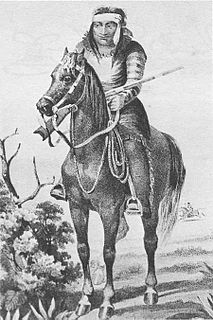 W
WThe Battle of the Diablo Mountains was an October 1854 engagement between the U.S. Army and the Lipan Apache. A small force of Mounted Rifles attacked a much larger force of Lipan Apaches at the base of the Diablo Mountains in Texas.
 W
WThe Eureka Rebellion occurred in 1854, instigated by gold miners in Ballarat, Victoria, Australia, who revolted against the colonial authority of the United Kingdom. It culminated in the Battle of the Eureka Stockade, which was fought between rebels and the colonial forces of Australia on 3 December 1854 at Eureka Lead and named after a stockade structure built by miners in the lead-up to the conflict. The rebellion resulted in at least 27 deaths and many injuries, the majority of casualties being rebels.
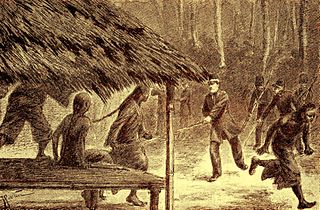 W
WThe expedition against the Chinese in Montrado (1854–1855) was a punitive expedition of the Royal Netherlands Indies Army against Chinese rebels in Montrado (Borneo).
 W
WThe Grattan Massacre, also known as the Grattan Fight, was the opening engagement of the First Sioux War, fought between United States Army and Lakota Sioux warriors on August 19, 1854. It occurred east of Fort Laramie, Nebraska Territory, in present-day Goshen County, Wyoming.
 W
WThe Bombardment of Greytown or the Bombardment of San Juan del Norte was a naval action initiated by the United States sloop-of-war USS Cyane, commanded by George N. Hollins, against the town of Greytown in the Miskito Kingdom, which was under British protection. The town was completely destroyed.
 W
WThe Battle of Inkerman was fought during the Crimean War on 5 November 1854 between the allied armies of Britain, France and Ottoman Empire against the Imperial Russian Army. The battle broke the will of the Russian Army to defeat the allies in the field, and was followed by the Siege of Sevastopol. The role of troops fighting mostly on their own initiative due to the foggy conditions during the battle has earned the engagement the name "The Soldier's Battle".
 W
WThe Jicarilla War began in 1849 and was fought between the Jicarilla Apaches and the United States Army in the New Mexico Territory. Ute warriors also played a significant role in the conflict as they were allied with the Jicarillas. The war started when the Apaches and Utes began raiding against settlers on the Santa Fe Trail. Eventually, in 1853, the American army retaliated which resulted in a series of battles and campaigns that ended in 1854 when a large military expedition managed to quell most of the violence. However, some minor skirmishing continued into 1855.
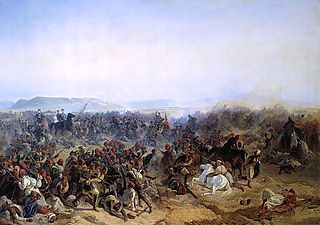 W
WThe Battle of Kurekdere took place in 1854 as part of the Crimean War. It started when the Ottoman army of Kars marched towards Gyumri to attack the Russian force commanded by General Vasili Bebutov, already weakened with detachments. The battle was related with great spirit and the defeat of the Ottoman army by the Russian forces.
 W
WThe Siege of Petropavlovsk was a military operation in the Pacific Theatre of the Crimean War. The Russian casualties are estimated at 115 soldiers and sailors killed and seriously wounded, whilst the British suffered 105 casualties and the French 104.
 W
WThe Red Turban Rebellion of 1854–1856 was a rebellion by members of the Tiandihui or Heaven and Earth Society (天地會) in the Guangdong province of South China.
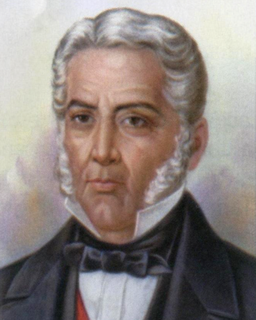 W
WThe Plan of Ayutla was the 1854 written plan aimed at removing conservative, centralist President Antonio López de Santa Anna from control of Mexico during the Second Federal Republic of Mexico period. Initially, it seemed little different than other political plans of the era, but it is considered to be the first act of the Liberal Reform in Mexico. It was the catalyst for revolts in many parts of Mexico, which led to the resignation of Santa Anna from the presidency, never to vie for office again. The next Presidents of Mexico were the liberals, Juan Álvarez, Ignacio Comonfort, and Benito Juárez. The new regime would then proclaim the 1857 Mexican Constitution, which implemented a variety of liberal reforms.
 W
WThe siege of Sevastopol lasted from October 1854 until September 1855, during the Crimean War. The allies landed at Eupatoria on 14 September 1854, intending to make a triumphal march to Sevastopol, the capital of the Crimea, with 50,000 men. The 56-kilometre (35 mi) traverse took a year of fighting against the Russians. Major battles along the way were Alma, Balaklava, Inkerman, Tchernaya, Redan, and, finally, Malakoff. During the siege, the allied navy undertook six bombardments of the capital, on 17 October 1854; and on 9 April, 6 June, 17 June, 17 August, and 5 September 1855.
 W
WThe Siege of Silistra took place during the Crimean War, from 11 May to 23 June 1854, when Russian forces besieged the Ottoman fortress of Silistra. Sustained Ottoman resistance allowed French and British troops to build up a significant army in nearby Varna; after six weeks of siege the Russian forces, although about to storm the fortress, were ordered to lift the siege and retreat from the area, thus ending the Danubian phase of the war.
 W
WThe Thin Red Line was an episode in the Battle of Balaclava on 25 October 1854, during the Crimean War. In this incident, around 500 men of the 93rd, aided by a small force of 100 walking wounded, 40 detached Guardsmen, and supported by a substantial force of Turkish infantrymen, led by Sir Colin Campbell, fired at the Russian cavalry. Previously, Campbell's Highland Brigade had taken part in actions at the Battle of Alma and the Siege of Sevastopol. There were more Victoria Crosses presented to the Highland soldiers at that time than at any other. The event was lionised in the British press and became an icon of the qualities of the British soldier in a war that was arguably poorly managed and increasingly unpopular.
 W
WChief Walkara was a Shoshone leader of the Utah Indians known as the Timpanogo and Sanpete Band. It is not completely clear what cultural group the Utah or Timpanogo Indians belonged to, but they are listed as Shoshone. He had a reputation as a diplomat, horseman and warrior, and a military leader of raiding parties, and in the Wakara War.